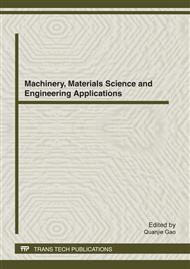p.334
p.340
p.345
p.350
p.356
p.362
p.368
p.375
p.380
A New Method for Analyzing X-Cor Sandwich’s Shear Strength
Abstract:
The finite element software was used to get the X-cor sandwich’s shear strength. During the shear strength analysis, the failure criterion and materials stiffness degradation rules fitting for the analysis of X-cor sandwich’s failure mechanism were proposed and the X-cor sandwich’s failure process and modes were also clarified. According to the failure criterion we used the elements with stiffness degradation and their distributions in the finite element model to simulate the types and propagation path of the failure and the failure mechanisms of X-cor sandwich under shear were explained. The finite element analysis indicates during the shear firstly the resin regions fail and then the multiple failure modes of Z-pin pull-out from the face-sheet, Z-pin shear off and Z-pin buckling all exist. The propagation paths of the failure elements are dispersive. By contrasting the finite element results and test results the values are consistent well and the error range is -10.4%~7.4%. The comparison results show that the failure criterion and stiffness degradation rules are reasonable and this method can be used to predict the X-cor sandwich’s shear strength.
Info:
Periodical:
Pages:
356-361
Citation:
Online since:
April 2012
Authors:
Keywords:
Price:
Сopyright:
© 2012 Trans Tech Publications Ltd. All Rights Reserved
Share:
Citation:


